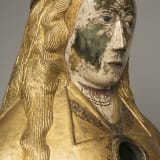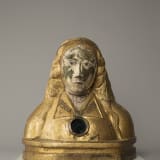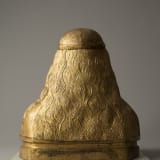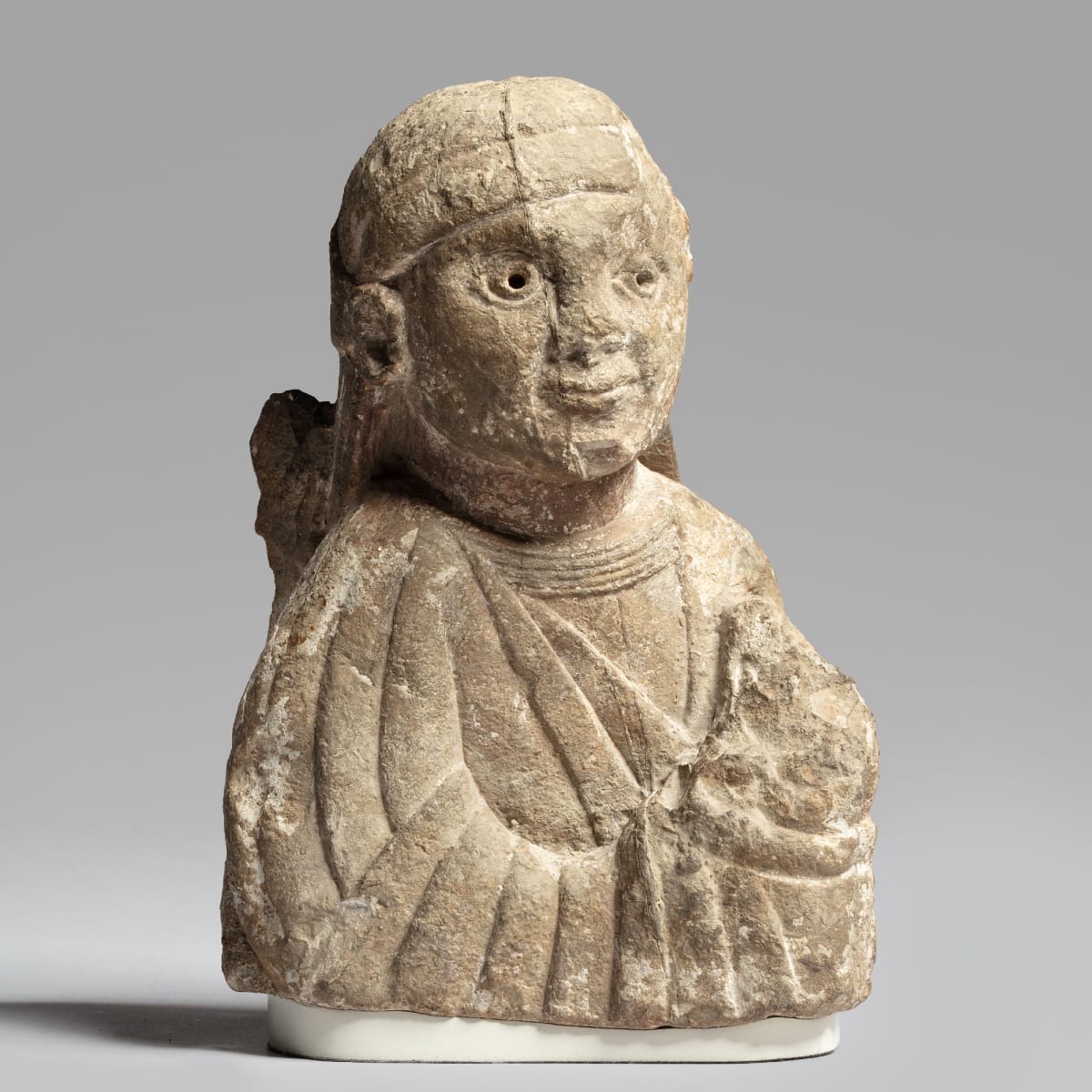




A gilded brass reliquary bust of a martyred female saint
The brass reliquary bust is highly unusual because it combines an archaic aesthetic, characterised by abstraction, with late medieval detailing. The stylistic character of the bust, including the undulating hair, the late medieval dress type and the heavy chains suggest a late 15th century date. The localisation is probably best suggested by the unusual choice of material used for these busts – polychromed brass. Centres of brass production in late medieval Europe were concentrated between the Meuse and Rhine rivers, areas which were important sources of calamine. The localisation to Switzerland is also suggested by the unusual practise of using polychromy on metal, which has a tradition in 15th century Aosta and Geneva. Unlike wood, metal was increasingly thought to be a more appropriate material to house sacred remains of saints. In addition to this, it is thought that the growing taste for naturalism in the 15th century and the ‘evocative force’ of polychromed wooden busts probably created a shift in the desired aesthetic of the metal busts of Southern Germany and Switzerland.










